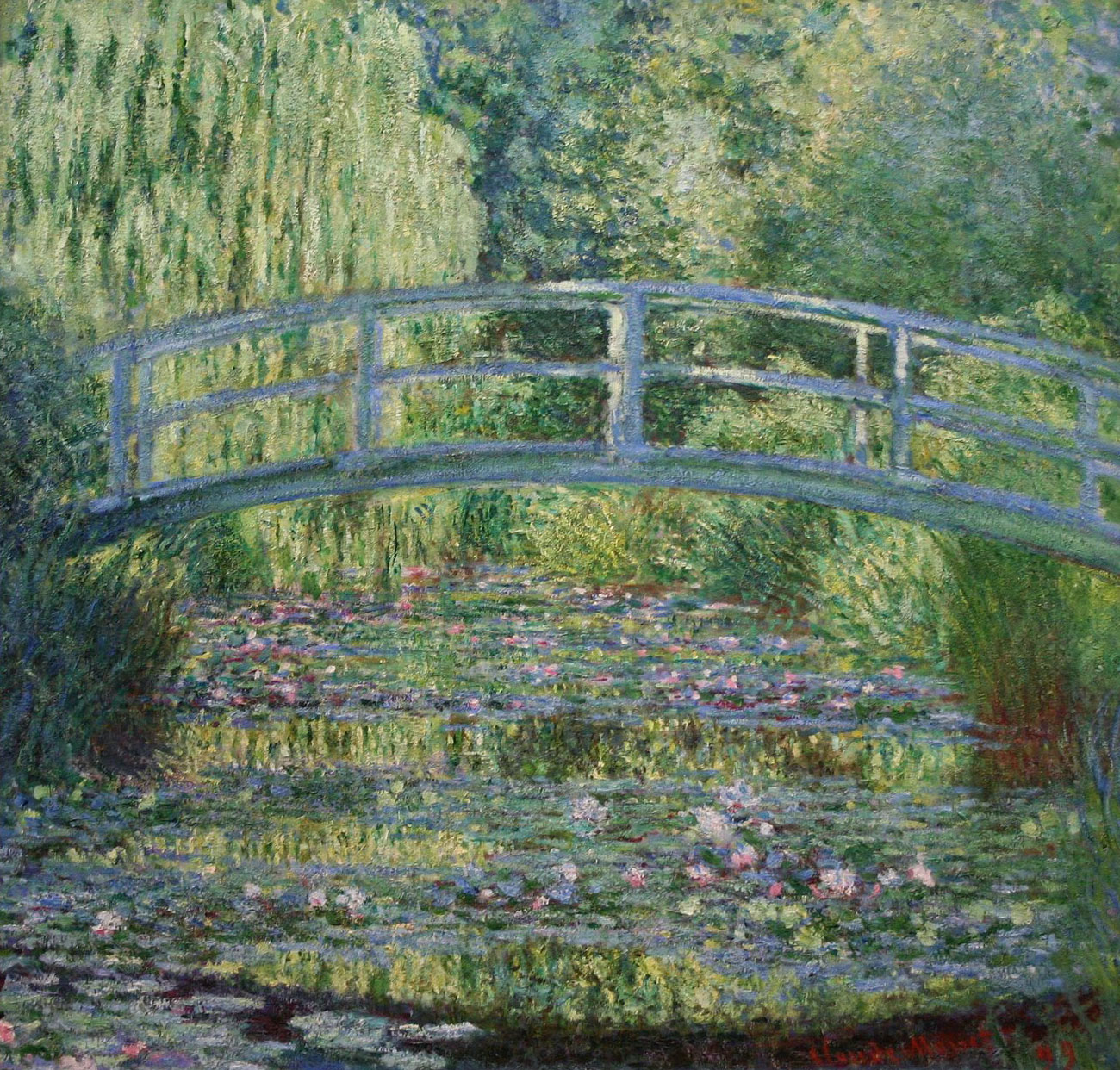In 1893, Monet, a passionate horticulturist, purchased land near his property in Giverny, intending to build something "for the pleasure of the eye and also for motifs to paint." The result was his water lily garden. In 1899, he began a series of 18 views of the wooden footbridge over the pond he built, completing twelve paintings, including the present one, that summer. Some of these views, at the end of Monet's life, became purely abstract. Today, however, we present a version that is a great example of Impressionism—we see light, colors, water, and a captured moment.
Like other Impressionists, Claude Monet was under the spell of Japanese art. In 1854, when a treaty was signed between Japan and the US, a flood of Japanese imports entered the European markets exposing artists to the philosophies and artistic practices of Eastern countries. These imports reached Paris, and ukiyo-e woodcuts introduced the novel concepts of flat planes of color, asymmetrical compositions, unconventional poses, and everyday scenes into art. Monet knew Hokusai's prints and owned a couple of them. His Giverny bridge is undoubtedly a beautiful inspiration and homage to Japanese art.
You can learn more about how Japanese art influenced the Impressionists in our Mega Impressionism Course. There is one huge lesson about this topic! :)
P.S. Did you know that you can visit Monet's house today? If you're planning to do so, first read this brief history of the Giverny house. :)


 Claude Monet
Claude Monet